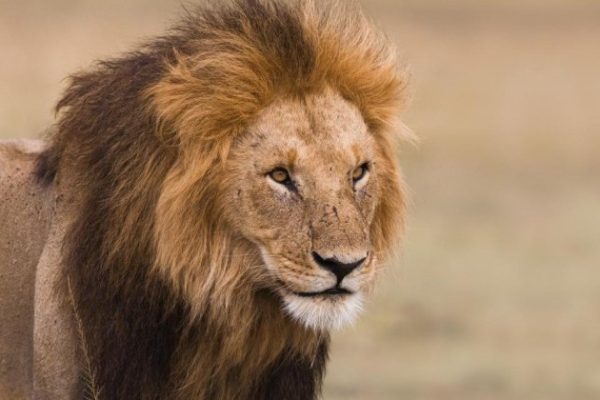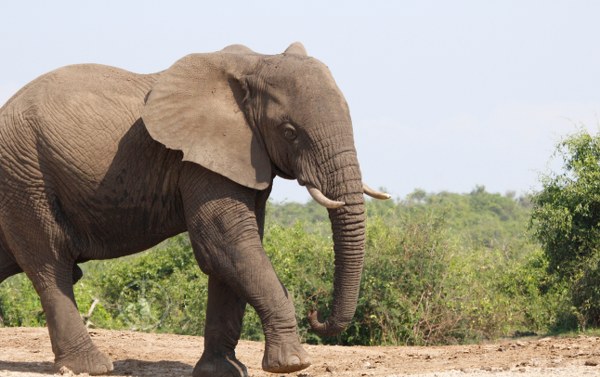Birds, Wildlife And Animals in Masai Mara National Reserve
Simply said, the wildlife in the Masai Mara is regarded as one of the world’s best collections of wild species. Masai Mara and the adjacent Great Mara eco system are home to a rich, diversified array of wildlife that travelers from over the world travel to view during an African safari. There are literally close to 90 species of mammals and many more bird species there.
We have divided the wildlife into two groups: the Big Nine, which also includes the Cheetah, Giraffe, Hippo, and Zebra, and the general Mammal list, which includes the well-known Big Five (Lion, Elephant, Rhino, Leopard, and Buffalo). Below is a list of notable birds that can be found frequently in the Masai Mara. Upon request, a bird checklist can be emailed.
Animals of the Masai Mara
The Big Five Animals in Masai Mara National Reserve
The majority of visitors travel to East Africa in search of the “Big 5,” which include the Lion, Elephant, Rhino, Leopard, and Buffalo. The Mara is one of the few areas in Africa where witnessing all five of these animal species during a three-day safari is not just conceivable but also reasonably likely.

Lion ( Panthera Leo)
The Masai Mara National Reserve and the conservancies that border the reserve are thought to be home to between 850 and 900 lions. One of the greatest areas in Kenya and East Africa to witness these amazing creatures on a safari is usually thought to be the “Mara,” as it is also known. Male lions may control vast territories that can be between 30 and 400 square kilometers in size. When it comes to hunting down the prey, the lionesses (females) take the lead. The Males will occasionally help in a hunt.

Elephant ( Loxodonta Africana)
The African Elephant, one of the most numerous creatures in the Mara, is a perceptive, gregarious, and familial animal. Despite the threat it attracts owing to its ivory, the good news is that populations have increased in the Masai Mara over the past several years. African elephants, which may weigh up to 6.6 tons, are the biggest land creatures in the world.
Rhino (Rhinocerotidae)
Black rhinos, which are somewhat smaller but more aggressive than White rhinos, which are more frequently seen at Lake Nakuru, are found solely in the Masai Mara. The proper term for the rhino is Rhinocerous, and it can be any of the five living species of odd-toed ungulates (Rhinocerotidae) or any of the numerous extinct species. There is actually no color difference between black and white rhinos; they are just smaller. Black rhinos utilize their horns for protection against predators, for fighting, and during mating. Additionally, they prefer habitats with dense bushes and use their hooked lip to browse vegetation.
Leopard (Panthera pardus)
One of the five species in the genus Panthera, the leopard (Panthera Pardus) is regarded as a member of the Big Cat family. Despite the fact that leopard populations are threatened by human encroachment and habitat degradation, leopards are still classed as vulnerable on the IUCN Red List, even though they can be found in good numbers in the Masai Mara and in a few other parks in Kenya. Leopards are typically’shy’ animals that prefer to hunt at night and nearly always hunt alone.
African Buffalo (Syncerus caffer)
These enormous bovines, also known as Cape Buffaloes, are among the more dangerous animals in East Africa, in part because of their erratic and explosive behavior. For this reason, unlike in Asia, the African Buffalo has never been domesticated. The most hostile animals are females defending their young calves and lone rogue bulls. Having an 800 kg angry animal is no laughing matter. Although the horns on females are somewhat smaller than those on males, both sexes have the distinctively curved horns that expand and almost meet over the forehead. Especially during the dry season, buffalo are frequently encountered in herds of 100 or more, and they never venture too far from water. With the exception of Nairobi National Park, these species can be seen in large numbers in all of the major parks. They are abundant in the Masai Mara National Game Reserve as well.
The Big Nine Animal List In Kenya
The addition of the cheetah, giraffe, zebra, and hippopotamus makes the Big 9 virtually the same as the Big Five mentioned above. One of the few areas in Kenya and East Africa, the Masai Mara, offers the chance to see all nine species of the Big Nine on a 2- to 3-hour game drive.
Cheetah (Acinonyx Jubantus)
One of the most recognizable creatures in the Masai Mara is the cheetah. It is known for hunting in the open and in packs of up to four or five. Cheetahs are the fastest land mammals, reaching speeds of up to 110 km per hour briefly while on the hunt. The Cheetah resembles leopards in look, but is longer and lighter in weight. Its face is somewhat smaller and rounder, and its back is slightly bent. It weighs between 40 and 60 kg, stands around 80 cm tall at the shoulder, and is about 210 cm long (including the tail). All of Kenya’s major game reserves include it, though in very limited quantities.
Giraffe (Giraffa)
The giraffe (Giraffa), which is the tallest living terrestrial animal, is quite the sight. They are renowned for their beautiful movements, even when they run at their top speed of 50 to 60 km/h. There are two primary subspecies of giraffe found in Kenya: the Maasai Giraffe in southern Kenya, which includes the Masai Mara, and the Reticulated or Somali Giraffe in northern Kenya. Nearly 33,000 Maasai giraffe are thought to still be living in the Kenyan wilderness.
Hippo (Hippopotamus amphibius)
The Hippopotamus, scientific name Hippopotamus amphibius, is the third biggest terrestrial mammal, with an average adult male weighing close to 1500 kilos. Hippos often live in swamps, rivers, and regions close to lakes, staying submerged for the most of the day to stay cool. The Masai Mara National Game Reserve is where you’ll find the most of them, although you can also view them at Amboseli, Nairobi, and Tsavo National Parks as well as Lake Baringo.
Zebra (Equus quagga)
Zebras, one of the wild creatures that most people would always identify with East Africa, are typically found in high numbers in Masai Mara and Kenya. The Plains Zebra, Mountain Zebra, and Grevy’s Zebra are the two subspecies. The plains zebra is found in the Masai Mara, whilst the Grevy’s zebra, which has distinctively smaller stripes, may be found in the Samburu Reserve in northern Kenya.
Mammals List in Masai Mara Game Reserve
Animals of the Masai Mara National Reserve
List of Mammals In addition to the Big Five or Big Nine, the Masai Mara is also home to a great number of other creatures. Starting with a list of mammals below, here is a list of some of the other, diversified animals you can find in the Masai Mara Game Reserve.;
Wildebeest ( Connochaetes ), Waterbuck ( Kobus ellipsiprymnus ), Warthogs ( Phacochoerus africanus ), Vervet Monkey ( Cercopithecus aethiops ), Topi (Damaliscus lunatus jimela), Thomson’s Gazelle ( Gazella thomsonii ), Straw Coloured Fruit Bat ( Eidolon helvum ), Spring Hare ( Pedetes capensis ), Spotted Hyena ( Hyaena hyaena ), Slender Mongoose ( Herpestes sanguineus ), Side Striped Jackal ( Canis adustus ), Pangolin ( Manis temminckii ), Oribi ( Ourebia ourebi ), Olive Baboons ( Papio cynocephalus anubis ), Klipspringer ( Oreotragus oreotragus ), Kirk’s Dik Dik ( Madoqua kirkii ), Impala ( Aepyceros melampus ), Honey Badger ( Mellivora capensis ), Grant’s Gazelle ( Gazella granti ), Dwarf Mongoose ( Helpgale parvula ), Crested Porcupine ( Hystrix cristata ), Copper Tailed Monkey/ Red Tailed Monkey ( Cercopithecus ascanius ), Common Eland ( Taurotragus oryx ), Coke’s Hartebeest ( Alcelaphus buselaphus cokii ), Bushbuck ( Tragelaphus scriptus ), Bushbaby ( Galago senegalensis ), Bat Eared Fox ( Otocyon magalotis ), Banded Mongoose ( Mungos mungo ), Antelope ( Alcelaphinae ), African Hare ( Lepus capensis ), Aardwolf ( Proteles cristatus ), and Aardvark ( Orycteropus afer )
Bird List of Masai Mara
Birds of Maasai Mara, Kenya
List of birds Masai Mara, with over 500 species reported, is still a very good area for ornithological excursions, despite not being the obvious choice of destination for birding in Kenya, which is after all home to some of the top birding hotspots in the world. Many of these species are raptor species.;
Abdim’s Stork (Ciconia abdimii), African Darter (Anhinga rufa), African Grey Hornbill (Tockus nasutus), African Fish Eagle (Haliaeetus vocifer), African Harrier Hawk (Polyboroides typus), African Openbill Stork (Anastomus lamelligerus), African Spoonbill (Platalea alba), African White Backed Vulture (Gyps africanus), Bateleur (Terathopius ecaudatus), Black Chested Snake Eagle (Circaetus pectoralis), Black Headed Heron (Ardea melanocephala), Black-Winged Kite (Elanus caeruleus), Coqui Francolin (Francolinus coqui), Egyptian Goose (Alopochen aegyptiacus), Fischer’s Sparrow Lark (Eremopterix leucopareia), Green Wood Hoopoe (Phoeniculus purpureus), Grey Headed Kingfisher (Halcyon leucocephala), Grey Kestrel (Falco ardosiaceus), Hamerkop (Scopus umbretta), Hadeda Ibis (Bostrychia hagedash), Kori Bustard (Ardeotis kori), Lappet Faced Vulture (Torgos tracheliotus), Lilac Breasted Roller (Coracias caudata), Marabou Stork (Leptopilos crumeniferus), Martial Eagle (Polemaetus bellicosus), Ostrich (Struthio camelus), Rufous Naped Lark (Mirafra africana), Ruppell’s Vulture (Gyps rueppellii), Secretary bird ( Sagittaruis serpentaruis), Southern Ground Hornbill (Bucorvus leadbeateri), Southern Masked Weaver (Ploceus velatus), Speckled Mousebird (Colius striatus), Spotted Thick Knee (Burhinus capensis), Striped Kingfisher (Halcyon chelicuti), Superb Starling (Lamprotornis superbus), Usambiro Barbet (Trachyphonus usambiro), and Vulturine Guineafowl (Acryllium vulturinum)

